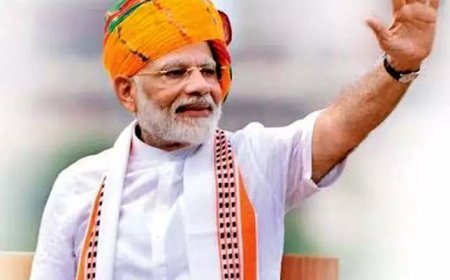Oil Shock and Market Jitters: India Reacts to Middle East Crisis
India’s markets plunge as US joins Iran-Israel conflict; crude oil prices spike, threatening inflation and economic stability.

The Indian equity markets saw a steep decline following a geopolitical flare-up that sent shockwaves across global exchanges. On June 22, 2025, investor sentiment took a sharp hit as the United States formally intervened in the escalating Iran-Israel conflict. The result: panic selling, skyrocketing oil prices, and a massive drop in Indian benchmark indices like Sensex and Nifty.
On June 23, the Sensex tumbled over 800 points, and the Nifty slipped below the critical 25,000 mark, underscoring investors’ flight to safety. Several Asian markets followed a similar trajectory, while some Middle Eastern markets oddly saw bullish momentum—suggesting regional divergence in market confidence.
Strategic Chokepoint: Strait of Hormuz
India’s vulnerability became glaring when fears emerged over Iran potentially blocking the Strait of Hormuz, a vital passage for nearly one-third of the world’s seaborne oil. With India relying on this route for around 27% to 36% of its crude oil imports, any disruption poses a direct economic threat.
Manish Goyal, Founder and Managing Director of Equentis Wealth Advisory, explained that a prolonged standoff could significantly affect India’s trade balance and fiscal outlook. Rising crude and LNG prices would inflate the import bill, weaken the rupee, and apply upward pressure on inflation and the current account deficit. Some global investment firms even projected oil reaching $100 per barrel—a level that could shave off 10-20 basis points from India’s FY26 GDP growth.
Sectoral Impact: Pain Across the Board
Several key Indian sectors bore the brunt of oil price volatility:
Oil Marketing Companies (OMCs): Public sector giants like Indian Oil (IOC), Bharat Petroleum (BPCL), and Hindustan Petroleum (HPCL) are struggling with shrinking marketing margins as they are unable to fully pass on the cost surge to consumers.
Aviation Sector: Airlines like IndiGo and SpiceJet face rising operational costs due to spiking jet fuel prices, threatening their profit margins.
Paint Manufacturers: Firms such as Asian Paints, Berger, and Nerolac face increased input costs since many of their raw materials are petroleum derivatives.
Automobile Industry: Car makers are seeing weakened consumer demand and costlier petroleum-linked components.
Chemical and Fertilizer Companies: These sectors are particularly vulnerable due to their dependence on imported crude-based raw materials.
Temporary Relief?
However, as tensions showed signs of easing and oil prices declined by nearly 9% shortly after the initial shock, markets experienced minor recovery. Yet experts like Goyal caution that volatility will persist until geopolitical clarity returns. For now, investors are bracing for a turbulent ride amid rising oil prices and shifting global dynamics.
India, being one of the world's largest oil importers, must now tread carefully, balancing economic priorities with evolving geopolitical realities.
What's Your Reaction?
 Like
0
Like
0
 Dislike
0
Dislike
0
 Love
0
Love
0
 Funny
0
Funny
0
 Angry
0
Angry
0
 Sad
0
Sad
0
 Wow
0
Wow
0











































